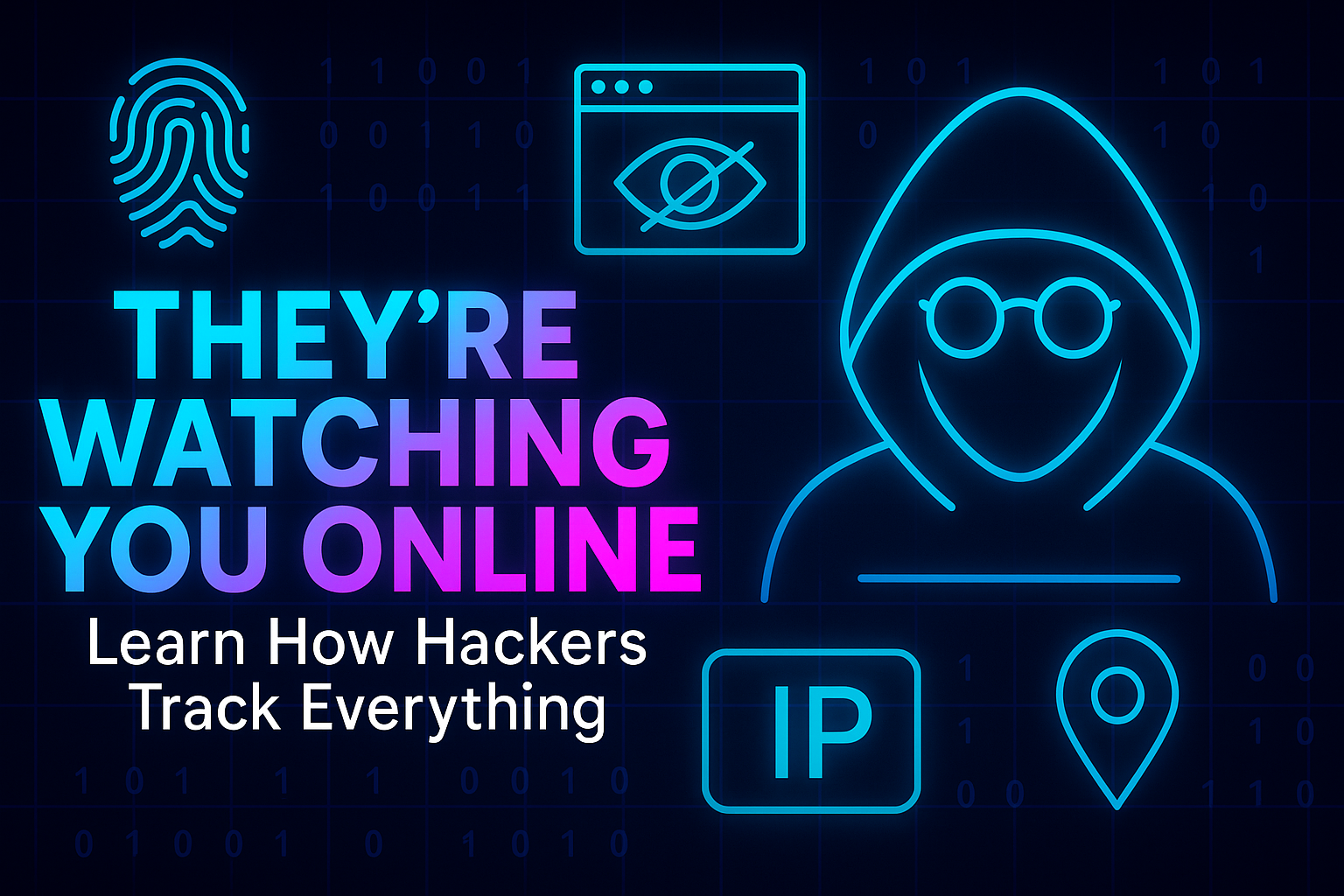
18
They’re Watching You Online: Learn How Hackers Track Everything
Learn how hackers can follow your online activity and get simple, effective steps to protect your personal data and browse the internet more safely.
Think you're browsing in peace? Think again.
Every scroll, click, and keystroke leaves a digital breadcrumb—and hackers know exactly how to follow it.
Whether you're casually surfing or deep in research mode, you’re leaking data like a sieve: location, habits, devices, even what time you usually check your email. Creepy? Yep. Dangerous? Definitely.
In this post, we’ll break down the top methods hackers use to track you online—and more importantly, how you can flip the script and outsmart them at their own game.
Let’s dive in.
1. Your Digital Footprint is Bigger Than You Think
Hackers don’t need to “hack” to track you. You’re giving up data by default:
- 📍 IP Address: Reveals your location and device network.
- 🧠 User-Agent Strings: Tell websites (and hackers) what browser and OS you’re using.
- 🍪 Cookies: Track everything from shopping habits to login behavior.
- 📲 Device Fingerprinting: Combines your screen size, fonts, plugins, and more to build a unique profile.
- 📸 Metadata: Photos, PDFs, and docs often carry hidden data (like GPS coordinates or device info).
The result? You're broadcasting a unique digital signature—perfect for profiling, tracking, or targeted attacks.
2. How Hackers Use This Info
Hackers (and shady marketers) use your data to:
🎯 Target You with Phishing
By knowing what sites you visit and when, they can craft convincing fake emails or websites.
🔍 Build a Recon Profile
They collect small data points to build a full identity picture—ideal for identity theft or social engineering.
🕵️♂️ Track You Across Devices
Advanced fingerprinting lets attackers recognize you even if you switch browsers or go incognito.
💣 Exploit Outdated Software
Knowing your OS or browser version lets hackers launch version-specific attacks.
3. Flip the Script: Tools to Anonymize and Fight Back
You don’t have to be a hacker to protect yourself. Here’s how to counter their moves like a boss:
🔥 Mask Your IP
Use a VPN or Tor to hide your true location.
✅ Bonus: ElBaso’s IP Checker Tool shows what data you’re leaking.
🧬 Confuse Fingerprinters
Try tools like uBlock Origin, Canvas Defender, or Privacy Badger.
✅ Pro Tip: Use ElBaso’s User Agent Tool to see what your browser reveals.
🧼 Block Cookies & Trackers
Use Brave or Firefox with Enhanced Tracking Protection, or install extensions like Ghostery and NoScript.
🧠 Generate Strong Passwords
Hackers love weak passwords. ElBaso’s Password Generator = quick fix.
✉️ Use Burner Emails
Avoid spam and phishing with services like TempMail or SimpleLogin.
4. Advanced Tactics: The Hacker’s Toolkit (Used Against Them)
If you want to take it to the next level:
🕳️ Use Virtual Machines
Run your browser in a sandboxed VM to isolate it from your main system.
🧅 Go Full Tor Mode
Browse with the Tor Browser to layer your traffic through encrypted nodes.
🦾 Use Script Blockers
NoScript and ScriptSafe block potentially malicious scripts before they even load.
🕶️ Rotate Fingerprints
Some browser extensions let you fake or rotate browser fingerprints to throw trackers off.
5. Keep Your Edge Sharp
Cybersecurity isn’t a one-time setup. Hackers evolve—so should you.
- 📬 Subscribe to threat intel newsletters (like Krebs on Security).
- 📱 Use 2FA for every account.
- 🧽 Regularly audit your accounts, browser extensions, and devices.
And don’t forget: ElBaso.com gives you pro-grade tools without the fluff—IP checks, SSL tools, email validators, and more. Use them often.
Conclusion: You’re the Target — Until You’re Not
Hackers rely on the average user staying unaware. But now? You’ve got the playbook.
Start using the tools. Build better habits. Flip the script.
Because online, it’s not about hiding in the shadows — it’s about owning your presence without being owned.
Contact
Missing something?
Feel free to request missing tools or give some feedback using our contact form.
Contact Us